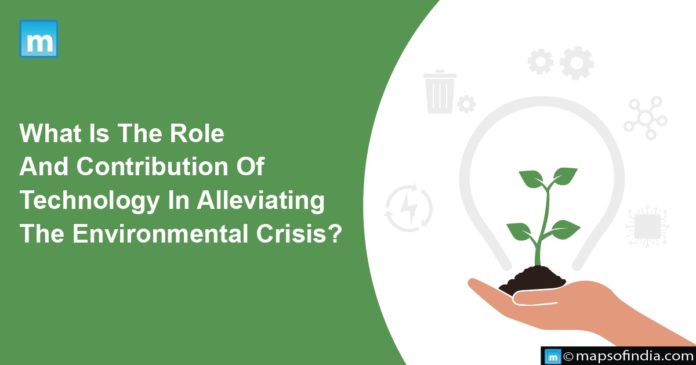The world faces a critical environmental crisis, and technology is crucial in mitigating it. Technological advancements have opened up new avenues for sustainable living, conservation of natural resources, and eco-friendly practices. In this blog, we explore the role and contribution of technology in alleviating the environmental crisis.
One of the most pressing issues facing the world is climate change, which is caused by the emission of greenhouse gases into the atmosphere. Technology has played a significant role in reducing greenhouse gas emissions. Renewable energy technologies, such as solar, wind, and hydropower, have become increasingly cost-effective and widespread. The use of electric vehicles and public transportation systems powered by clean energy is also becoming more common, reducing the reliance on fossil fuels.
Moreover, the advent of the Internet of Things (IoT) and the development of smart grids have made energy consumption more efficient. The IoT enables devices to communicate, allowing homeowners and businesses to optimize energy usage and reduce waste. Smart grids, which use advanced sensors and communication technologies, can detect power outages, regulate power flows, and even enable households to return excess energy to the grid.
Another area where technology is making significant contributions is in waste management. Smart waste management systems use sensors and real-time data analysis to optimize garbage collection and reduce waste. For instance, sensors can monitor the filling levels of trash bins, and garbage trucks can be dispatched only when needed, reducing fuel consumption and emissions. Advanced waste processing technologies, such as biodegradable plastics and composting, are also helping to reduce waste and minimize the environmental impact of discarded materials.
Technology is also playing a vital role in conservation efforts. Remote sensing technologies, like satellite imagery and drones, are helping conservationists to monitor and protect wildlife and ecosystems. For example, drones can monitor poaching activities in wildlife reserves and identify areas of illegal deforestation. Satellite imagery can provide insights into the health and vitality of forests and other ecosystems.
Furthermore, artificial intelligence (AI) predicts and prevents environmental disasters. AI models can analyze vast amounts of data to identify patterns and predict events such as floods, wildfires, and hurricanes. This information can help communities prepare for and mitigate the impact of natural disasters.
In conclusion, technology is making significant contributions to alleviating the environmental crisis. The adoption of renewable energy technologies, waste management systems, and conservation efforts, among others, is lowering the impact of human activities on the environment. Citizens must continue developing and implementing innovative solutions to address our planet’s environmental challenges. With the right technology and policies, we can create a sustainable future for ourselves and future generations.




